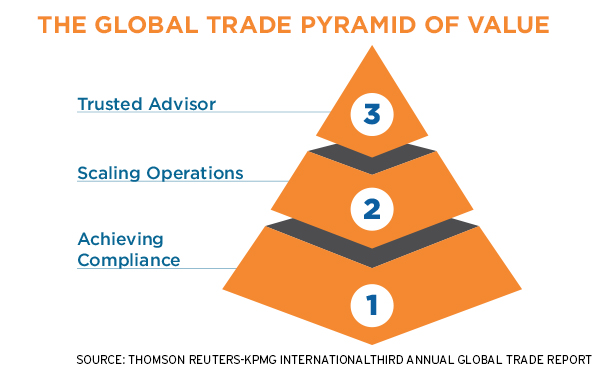Coping With Trade Compliance Challenges

The Thomson Reuters-KPMG International Third Annual Global Trade Report reveals leading practices from top global trade practitioners in the following areas:
Centralization
Centralizing the governance of global trade is a good starting point, report many large and experienced multinationals. They find that once one area is centralized, companies tend to centralize more trade processes than they initially thought they could.
Classification
Product classification is a common challenge among respondents to the 2016 Global Trade Report. To manage that challenge, multinationals are beginning to use shared services centers or centers of excellence to support the classification process.
Free trade agreements
While a minority of respondents to the 2016 Global Trade Report say their company uses all applicable free trade agreements (FTAs), the largest multinationals demonstrate sophisticated use of FTAs and C-suite visibility into FTAs. They also handle compliance at the local or regional level.
"These insights highlight the importance of implementing customized global trade technology and processes that meet a company’s individual needs," notes Doug Zuvich, partner and global practice leader, Trade and Customs, KPMG in the United States. "By implementing the right solutions, trade professionals can increase efficiency and accuracy while delivering real value to their organizations."
